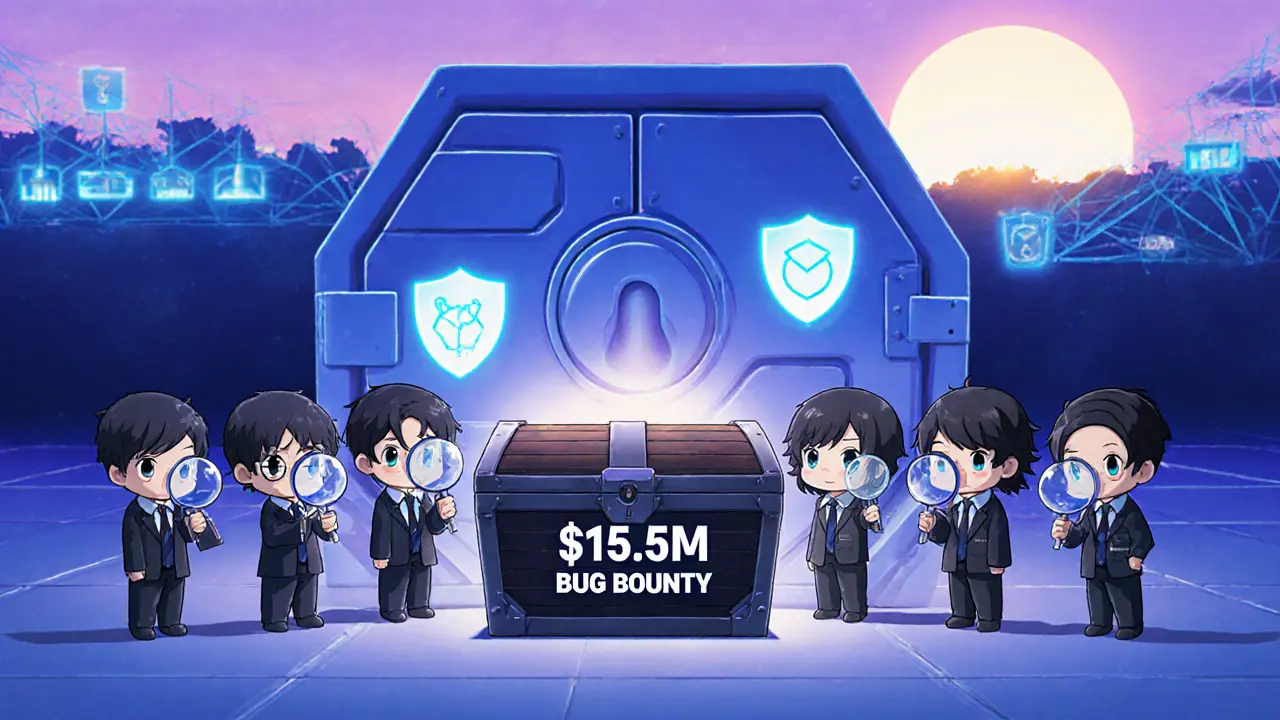Uniswap v3 vs v4 Gas Fee Calculator
Calculate estimated gas costs for swaps on Uniswap v3 versus v4 on the Blast network. Based on article data, v4 provides up to 40% gas reduction.
Trade Details
Comparison Options
When you hear Uniswap v4 the latest version of the Uniswap decentralized exchange protocol, you’re looking at a system that runs on multiple blockchains, starting with the Blast network. This review breaks down what makes this upgrade different, how it affects traders on Blast, and whether the hype matches reality.
What makes Uniswap v4 a developer platform?
Uniswap v4 isn’t just a new UI layer; it’s a complete overhaul of the protocol’s core. The biggest shift is the Hooks modular plugins that let developers inject custom logic into swaps, fees, and liquidity management. Over 150 community‑built hooks are already live, ranging from dynamic fee calculators to automated limit‑order engines. This turns every pool into a mini‑smart‑contract that can react to market conditions in real time.
Gas‑cost improvements with the singleton design
Earlier versions used a separate contract for each pool, forcing multiple interactions for multi‑hop trades. Uniswap v4 consolidates every pool into a single Liquidity Pool a unified smart‑contract that holds all token reserves and pricing logic. The result is up to a 40 % reduction in gas when executing typical swaps on Blast, where transaction fees are already lower than Ethereum mainnet. Users notice the difference immediately-most swaps settle under $0.001 on Blast compared with $0.004 on v3.
Security checklist: audits and bug bounty
Security was a top priority before launch. Uniswap v4 underwent nine independent Security Audits formal code reviews performed by external audit firms and a $15.5 million Bug Bounty program that rewarded researchers for finding vulnerabilities. No critical breaches have been reported since the January 31 2025 mainnet release. That said, each custom hook adds a new attack surface, so developers should vet third‑party hooks before using them.

Blast network integration
The Blast network, launched in early 2024, offers built‑in staking rewards for ETH and stablecoins. Deploying Uniswap v4 on Blast gives traders immediate access to those rewards while tapping into Uniswap’s deep liquidity pool. Because Blast is EVM‑compatible, the same wallet address works across Ethereum, Polygon, and Blast, eliminating the need for bridges that often introduce slippage and extra fees.
How to get started on Blast
- Connect a Web3 wallet (MetaMask, Trust Wallet, etc.) to the Uniswap interface.
- Select “v4 - Blast” from the network dropdown.
- Choose an existing pool or click “Create Pool” to launch a new one with a hook of your choice.
- Approve the token contracts and confirm the transaction. Gas will be displayed in Blast’s native GWEI.
- Watch the pool’s fee rate adjust automatically if you attached a dynamic‑fee hook.
For basic liquidity provision, the steps mirror v3, so even non‑developers can start earning fees within minutes.

Comparison: Uniswap v3 vs v4 (Blast focus)
| Feature | Uniswap v3 | Uniswap v4 |
|---|---|---|
| Contract architecture | Separate pool contracts per pair | Singleton pool contract |
| Fee model | Fixed 0.05 % / 0.30 % / 1 % | Dynamic fees via hooks |
| Gas per swap | ~70k gas | ~40k gas (≈40 % lower) |
| Custom logic | None (static AMM) | Unlimited, modular hooks |
| Security audits | 3 audits | 9 audits + $15.5 M bug bounty |
Pros, cons, and future outlook
- Pro: Gas savings make high‑frequency trading viable on Blast.
- Pro: Hooks unlock use‑cases like automated market‑making strategies that were impossible before.
- Con: Liquidity migration is still in progress; early v4 pools on Blast are thin, leading to higher slippage.
- Con: Custom hooks require code review; novice users might accidentally select risky implementations.
- Future: As more developers publish hooks, Blast could become a hotspot for specialized DEX products-think automated arbitrage bots and on‑chain insurance pools.
Final verdict
Uniswap v4 on Blast delivers on its promise of lower fees and limitless customization. If you’re comfortable checking hook code or sticking to audited, community‑vetted options, the platform offers a clear economic edge over v3. The biggest hurdle right now is liquidity depth; expect a few weeks of thin order books before the pools reach a comfortable size. For traders looking to minimize costs and developers eager to experiment, the launch marks a significant step forward.
What are hooks and why do they matter?
Hooks are small, modular contracts that sit inside a Uniswap v4 pool. They can change fee rates, enforce custom trade limits, or trigger automated liquidity actions based on market conditions. This lets developers build features like limit orders or dynamic fees without creating a brand‑new DEX.
How much cheaper are swaps on Blast compared to Ethereum?
Because of the singleton contract and Blast’s low base gas price, a typical $100 trade costs under $0.001 on Blast versus about $0.004 on Ethereum when using Uniswap v3. The exact number varies with network congestion.
Do I need to be a Solidity developer to use Uniswap v4?
No. Providing liquidity or swapping tokens works through the standard web UI, just like v3. However, creating or customizing hooks does require Solidity knowledge.
Is my capital safe on Uniswap v4?
The core protocol has passed nine security audits and a $15.5 million bug bounty. Risks mainly come from poorly written third‑party hooks. Stick to audited hooks or the default pool to minimize exposure.
When will full swap functionality be available on Blast?
Swap routing started rolling out a week after the January 31 launch. It continues to expand as liquidity migrates. Most major token pairs are live now, but niche assets may still be pending.




BRIAN NDUNG'U
October 22, 2025 AT 09:20While the overview aptly covers the reduction in gas consumption, a more rigorous examination of the singleton contract’s security implications would be prudent.
Donnie Bolena
October 26, 2025 AT 18:53Wow, the gas savings on Blast are insane!!! This could really democratize high‑frequency trading on a cheap layer!!!
Elizabeth Chatwood
October 31, 2025 AT 04:27i think the hooks sound cool but u gotta double check code lol
Tom Grimes
November 4, 2025 AT 14:00Uniswap v4 on Blast is a fascinating step forward.
It merges many pools into one contract which saves gas.
The lower fees mean traders can move smaller amounts profitably.
However, the new hook system also opens doors for hidden bugs.
Developers must audit each custom hook before deploying.
The community has already produced over a hundred hooks.
Some of those hooks dynamically adjust fees based on volatility.
Others act as limit‑order engines that sit inside the pool.
For a novice, the sheer number of options can feel overwhelming.
The user interface tries to hide complexity, but the underlying logic remains.
Security audits were extensive, yet no system is immune to exploits.
The $15.5 million bug bounty shows the team’s seriousness.
Liquidity on Blast is still thin, which can cause slippage.
As more liquidity migrates, the experience should smooth out.
Overall, the protocol balances innovation with risk, and traders should proceed with informed caution.
Rebecca Kurz
November 8, 2025 AT 23:33Notice how the bug bounty dollars are oddly specific!!! Could it be a signal that the core code hides backdoors??? Stay vigilant!!!
Stephen Rees
November 13, 2025 AT 09:07One might argue that the singleton architecture reflects a broader trend toward centralization within decentralized frameworks, a paradox worth pondering.
Katheline Coleman
November 17, 2025 AT 18:40While speculative concerns are understandable, it is important to emphasize that the audits were conducted by reputable firms and the bounty program is publicly disclosed.